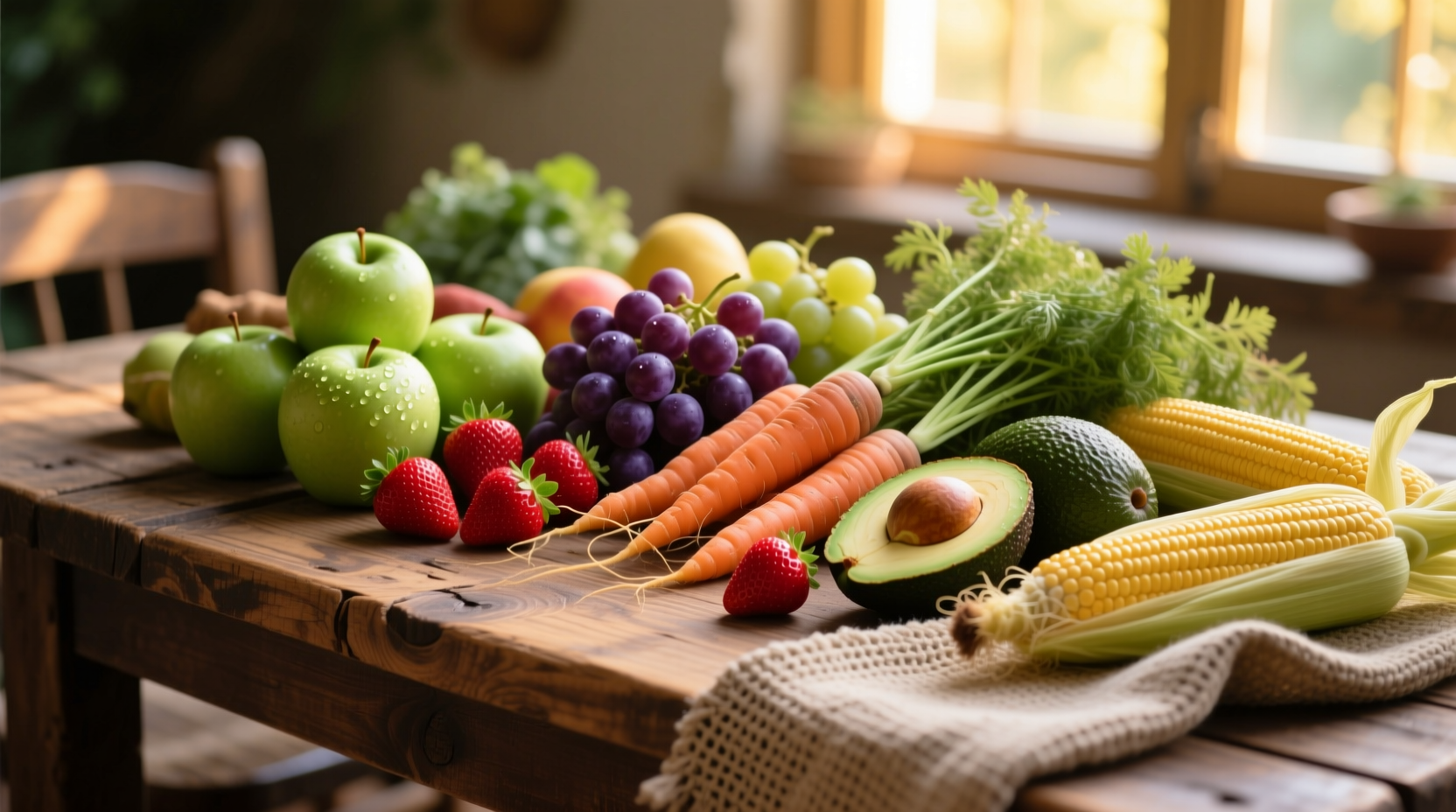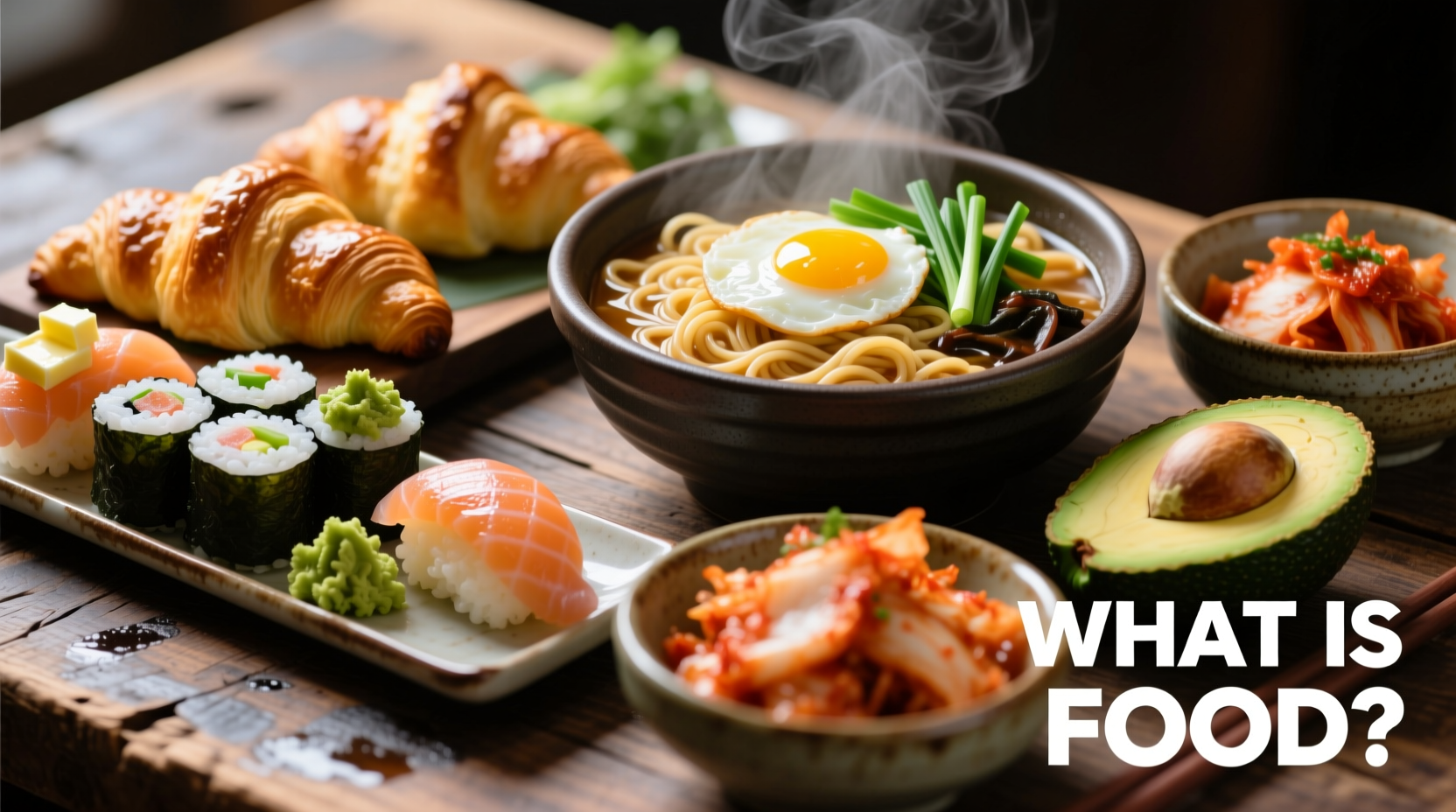Understanding what qualifies as food goes far beyond simply identifying edible items. This comprehensive guide reveals the scientific definition, biological purpose, and cultural dimensions of food—equipping you with knowledge that transforms how you view every meal. Whether you're a student researching nutrition basics or a curious eater wanting deeper understanding, you'll gain clarity on what truly constitutes food and why it matters for your health.
The Scientific Definition of Food
At its core, food serves as biological fuel. According to the Food and Agriculture Organization of the United Nations, food encompasses any substance—usually of plant or animal origin—that contains essential nutrients for energy, growth, and maintaining vital bodily processes. This definition excludes non-nutritive substances like water (though vital for life) and focuses on materials providing caloric energy and building blocks for the body.
What makes something "food" rather than just "edible"? The critical distinction lies in nutritional value. While many substances can be consumed safely, true food must deliver one or more essential nutrients the body cannot synthesize independently. For example, celery qualifies as food due to its fiber, vitamins, and minerals, whereas pure sugar water provides energy (calories) but lacks micronutrients—making it nutritionally incomplete.
Biological Purpose: Why We Need Food
Food serves three fundamental biological purposes that distinguish it from mere consumption:
- Energy production—Carbohydrates and fats provide calories converted to ATP, the cellular energy currency
- Bodily maintenance—Proteins supply amino acids for tissue repair and enzyme production
- Regulation of bodily functions—Vitamins and minerals act as cofactors in metabolic processes
Without these components, biological systems fail. The National Academies of Sciences, Engineering, and Medicine confirms that humans require 45+ essential nutrients exclusively obtained through food consumption. This biological necessity separates food from recreational substances like coffee or tea, which provide minimal nutritional value despite being commonly consumed.
Types of Food: The Nutrient Breakdown
Understanding food requires examining its nutritional components. The following table shows how different food categories deliver essential nutrients:
| Nutrient Category | Primary Food Sources | Biological Function | Daily Requirement |
|---|---|---|---|
| Carbohydrates | Grains, fruits, vegetables | Primary energy source (4 kcal/g) | 130g for adults |
| Proteins | Meat, legumes, dairy | Tissue repair, enzyme production (4 kcal/g) | 46-56g for adults |
| Fats | Oils, nuts, animal products | Energy storage, cell membrane integrity (9 kcal/g) | 20-35% of calories |
| Vitamins & Minerals | Fruits, vegetables, fortified foods | Metabolic regulation, bone health, immunity | Varies by nutrient |
Food Evolution: How Our Understanding Has Changed
Human understanding of food has evolved dramatically throughout history. This timeline reveals key milestones in how we've defined and understood food:
- Prehistoric Era—Food defined solely by trial and error; edible vs. poisonous determined through observation
- Ancient Civilizations—Early nutritional concepts emerged; Hippocrates noted "Let food be thy medicine" (400 BCE)
- 18th Century—Discovery of macronutrients; Antoine Lavoisier identified oxygen's role in metabolism
- Early 20th Century—Vitamins discovered; term "vitamine" coined in 1912
- 1941—First Recommended Dietary Allowances established in the United States
- Modern Era—Understanding of gut microbiome's role in food processing and nutrient absorption
This evolution shows how food definition has shifted from simple caloric intake to complex interactions between nutrients, biology, and health outcomes. The Centers for Disease Control and Prevention now recognizes that food quality matters as much as quantity, with dietary patterns significantly impacting chronic disease risk.
Cultural Perspectives on Food Definition
What qualifies as food varies dramatically across cultures, revealing important context boundaries:
- In Western cultures, insects generally don't qualify as food despite being nutritionally complete
- Many Asian cultures consider certain organ meats delicacies while Western cultures often reject them
- Some religious traditions define specific foods as non-food (e.g., pork in Jewish and Islamic traditions)
- Modern food technology challenges traditional definitions with lab-grown meat and nutrient-complete meal replacements
Anthropologists note that cultural food definitions serve social functions beyond nutrition. As documented in National Geographic's food studies, what a society considers "food" often reflects historical availability, religious beliefs, and social status markers. This cultural dimension explains why the same substance might be food in one context but not another.
Practical Applications: Why Food Definition Matters
Understanding what constitutes food has real-world implications:
- Nutritional literacy—Helps identify processed foods masquerading as nutritious options
- Dietary planning—Enables creation of balanced meals meeting biological requirements
- Food policy—Informs regulations about what can be marketed as food
- Medical contexts—Guides nutritional support for patients with special dietary needs
For example, recognizing that ultra-processed foods often lack complete nutrition despite providing calories helps explain why they contribute to "hidden hunger"—a condition where people consume sufficient calories but lack essential micronutrients. The World Health Organization emphasizes that true food should provide both energy and nutrients, not just empty calories.

Food Boundaries: What Doesn't Qualify as Food
Not everything consumed qualifies as food. Clear boundaries exist between food and non-food substances:
- Supplements—Provide isolated nutrients without the food matrix
- Beverages like water—Essential for life but provide no caloric energy
- Non-nutritive additives—Artificial colors, flavors without nutritional value
- Pharmaceuticals—Designed for therapeutic effect rather than nutrition
The distinction becomes crucial when evaluating modern food products. Many "food-like" substances in supermarkets provide energy but lack the complete nutrient profile required for biological function. True food maintains the natural synergy between nutrients found in whole foods—a concept increasingly recognized in nutritional science.
Conclusion: Food as Biological Necessity
Food represents far more than just edible substances—it's the biological foundation for life. The scientific definition centers on nutrient provision for energy, growth, and maintenance of vital functions. Understanding what qualifies as food empowers better dietary choices, separates nutrition from mere consumption, and connects us to the biological purpose behind eating. As nutritional science advances, this fundamental understanding remains essential for navigating today's complex food landscape.











 浙公网安备
33010002000092号
浙公网安备
33010002000092号 浙B2-20120091-4
浙B2-20120091-4